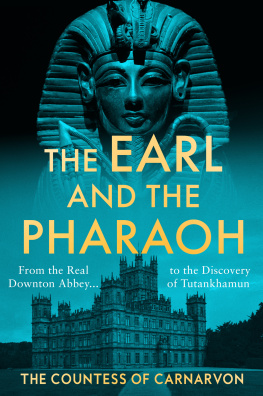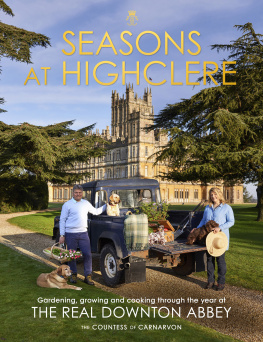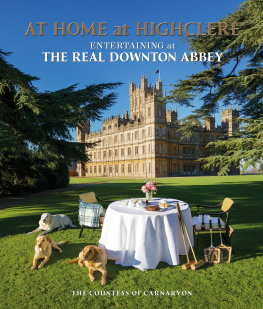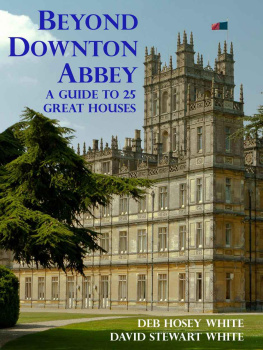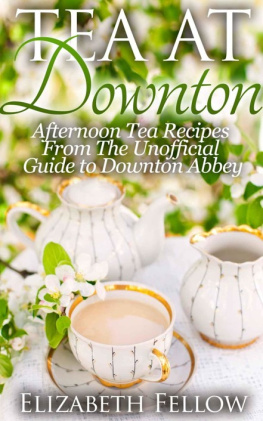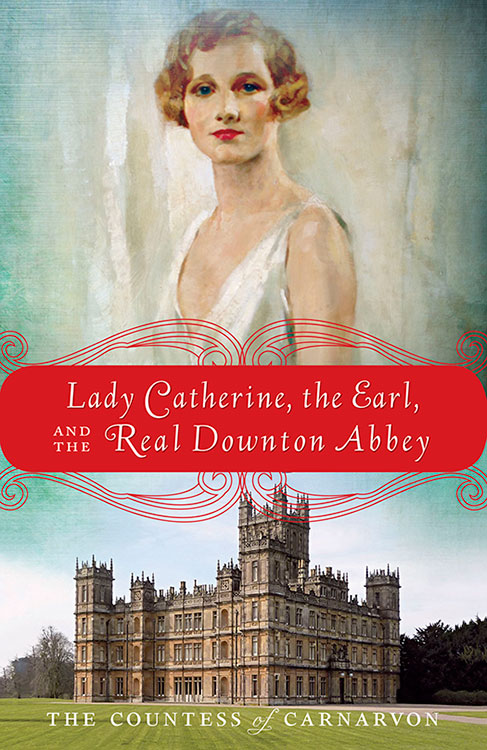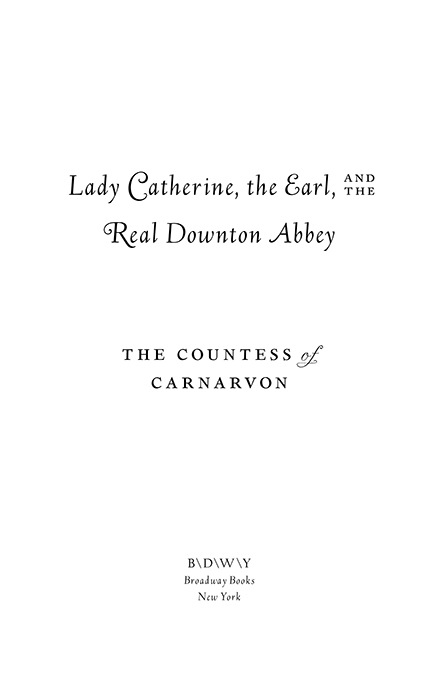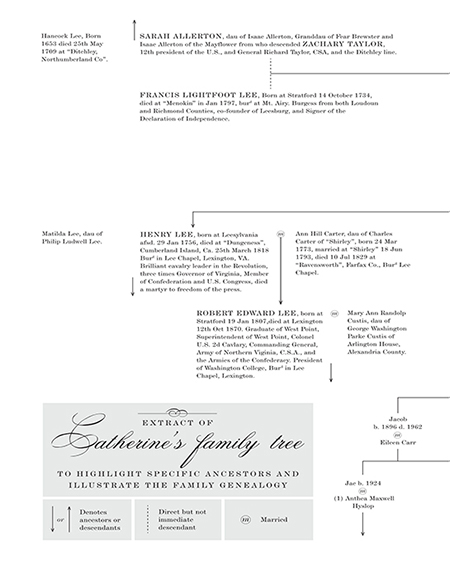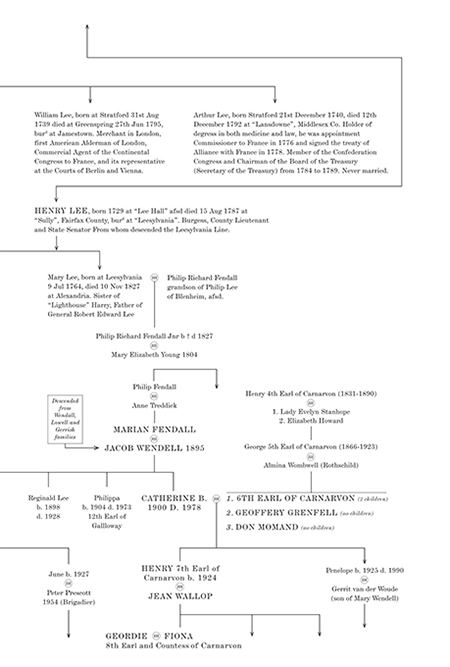A LSO BY THE C OUNTESS OF C ARNARVON
Lady Almina and the Real Downton Abbey:
The Lost Legacy of Highclere Castle
Copyright 2013 by 8th Countess of Carnarvon
All rights reserved.
Published in the United States by Broadway Books, an imprint of the Crown Publishing Group, a division of Random House LLC, a Penguin Random House Company, New York.
www.crownpublishing.com
Broadway Books and its logo, B \ D \ W \ Y, are trademarks of Random House LLC.
Originally published in hardcover in Great Britain by Hodder & Stoughton, a Hachette U.K. company, London, in 2013.
Downton Abbey is a registered trademark of Carnival Films Ltd.
Library of Congress Cataloging-in-Publication Data
Carnarvon, Fiona, Countess of.
Lady Catherine, the earl, and the real Downton Abbey / the Countess of Carnarvon.First edition.
1. Great BritainSocial life and customs20th century. 2. Highclere CastleHistory20th century. 3. Carnarvon, Henry George Alfred Herbert, Earl of, 18981987. 4. World War, 19391945Great Britain. 5. NobilityGreat BritainBiography. I. Carnarvon, Catherine, Countess of, 19001977. II. Title.
DA578.C29 2013
941.082092dc23
[B] 2013028842
ISBN 978-0-385-34496-8
eBook ISBN 978-0-385-34497-5
Cover design by Laura Klynstra
Cover photograph and painting: Highclere Castle Enterprises LLP 2013
Author photograph: Tobi Corney Photography
v3.1_r2
For my darling husband and son,
Geordie and Edward,
and my beloved sisters,
Sarah, Lucy, Alex, Penny and Georgie.
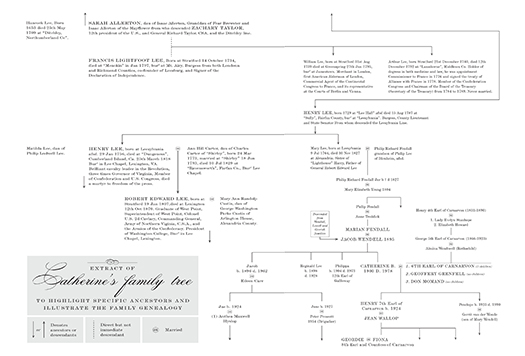
To view a full-size version of this image, click HERE.
Contents
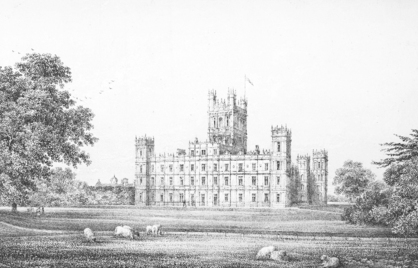
Prologue
This book describes the lives of the family who lived at Highclere Castle from 1923 to 1945, in particular the beautiful Anglo-American Catherine Wendell and the man she married, who became the 6th Earl of Carnarvon. Like its predecessor, about Almina the 5th Countess of Carnarvon, it is intended more as a narrative of the time than a work of history. Nonetheless, it is the product of many months of research in the Castles archives as well as conversation with those surviving family members who knew the people involved. It is based on diaries, memoirs, letters, household accounts and photographs, the guestbook that records those who came to stay and the recollections of those who worked here.
In Britain, the inter-war years were marked by the legacy of the First World War, which had exacted a terrible price on young mens lives and bequeathed economic turbulence and political change. The fabric of the old society was loosening and a new spirit of personal liberty was in the air. Many of the great houses of England declined as their owners became impoverished. Highcleres survival as the family home of the Carnarvons was very much in the balance. Increasingly, so was peace between the nations of Europe.
The new young 6th Earl and Countess of Carnarvon were initially burdened by their responsibilities, but soon enough they were swept up in the freedom and gaiety of the 1920s. Catherine was a beautiful, vivacious but thoughtful woman, loved by everybody; her husband was a generous and amusing host, an excellent judge of racehorses, and a kind and proud father. Unfortunately for Catherine, however, he grew increasingly fond of the glamour of London, of its clubs, its fast society and its romantic diversions.
The book features a cast of well-known people, friends of the Carnarvons, who played a part in shaping the politics of the 1920s and 1930s. At the outbreak of the Second World War, a new generation of the people who lived at Highclere were swept up into global conflict. The Castle became home to evacuee children and teachers, and the estate provided a training ground for soldiers from all over the world. Catherines son, the heir to Highclere, played his part in one of the most brutal campaigns of the war.
Despite the trials of these years, Highclere Castle and the community of people who lived and worked here survived; the house remains the home of the Earl and Countess of Carnarvon. Via its television alter ego Downton Abbey, Highclere Castle has achieved new renown on a global scale and thrilled millions of viewers in hundreds of countries.
I hope that you enjoy this book and its insights into the history of the Real Downton Abbey. My husband Geordie and I love this house, the landscape and the people who work here with us. It is an extraordinary place, full of wonderful stories.
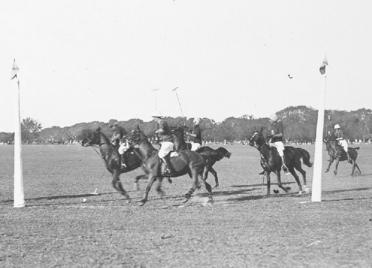
1
India, March 1923
It was a stifling afternoon at the Wheeler Polo Club in Meerut, northern India. The waves of heat still distorted the view over the five first-class polo grounds, but Catherine was much relieved that the most oppressive part of the day was over. She was sitting on a white-canopied dais with the Viceroy, Lord Reading, and Lord Inchcape, the chairman of the P&O line, their wives, Lady Reading and Lady Inchcape, and some other friends. Behind them, on the long, whitewashed verandahs, several hundred of the team members families and guests were watching the afternoons match.
Catherines husband, Lord Porchester, was playing number two and the game was level. She had never seen a polo match until she arrived in India two months ago, although her husband, a keen rider, played well. It was part of army life in a cavalry regiment. There were other amusements, beyond the polo grounds was a racecourse and her husbandwho was known to family and friends all his life as Porcheyalso enjoyed plenty of snipe, duck and black partridge shooting with his fellow officers.
Catherine was a favourite with all Porcheys friends. Very pretty, with an entrancing smile, she was flirtatious and fun. She was always impeccably stylish in the latest fashions. Even sitting under the huge canopy she would wear one of her charming wide-brimmed hats to protect her complexion from the relentless sun. March was not the hottest month in Meerut by any means; Catherine knew it would become uncomfortable as the spring turned to summer. But it was so beguiling, so different from the narrow grey skies between the houses in Mayfair, London. She loved the scents of the great Neem trees, the different herbs and spices that flavoured the air and the vastness and colours of India. It was all a world away from her experience.
Despite playing a significant part in the British Army during the First World War, time had stood still for the Army of British India. The cavalryman reigned supreme and his regiment trained and drilled in between dressing for supper and dining off silver plates in full mess kit. Servants were legion. Each officer occupied a bungalow with his wife and family and was attended by a



